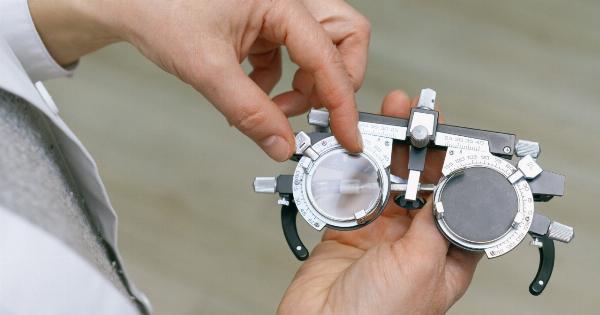Alzheimer’s disease is a progressive neurological disorder that affects the brain and leads to memory loss, cognitive decline, and behavioral changes. It is the most common cause of dementia, accounting for approximately 60-80% of all cases.
The disease primarily affects older adults, typically developing after the age of 65, although early-onset forms can also occur.
Importance of Early Detection
Early detection of Alzheimer’s disease is crucial as it allows for timely intervention, access to treatment options, and the opportunity for individuals to participate in clinical trials.
Identifying the disease in its early stages also provides the affected individuals and their families with the opportunity to plan for the future, make necessary lifestyle adjustments, and ensure proper caregiving arrangements are in place.
Current Screening Methods
Diagnosing Alzheimer’s disease in its early stages can be challenging due to the lack of definitive tests. The diagnosis is primarily based on medical history, comprehensive neurological exams, and the assessment of cognitive functions.
However, recent research has shown promising results in using eye exams as a potential screening tool for Alzheimer’s disease.
Eye Exams and Alzheimer’s Disease
The eyes offer a unique window into the brain’s health, as they are directly connected to the central nervous system. Many neurological and neurodegenerative diseases, including Alzheimer’s, can manifest through changes in the eyes.
Researchers have discovered specific ocular biomarkers associated with the disease, such as retinal thinning, amyloid-beta plaque deposits, and reduced blood vessel density.
The Role of Retinal Thinning
Retinal thinning, a condition in which the nerve cells at the back of the eye become damaged or lost, has been observed in individuals with Alzheimer’s disease.
The retina, responsible for converting light into electrical signals that the brain interprets as images, shares similarities with the brain’s neural tissue. Studies have shown that retinal thinning correlates with cognitive decline and can serve as a potential indicator of Alzheimer’s disease.
Amyloid-Beta Plaque Deposits
Amyloid-beta plaques are abnormal protein deposits that are known to accumulate in the brains of individuals with Alzheimer’s disease. Recent research has found that these plaques can also be detected in the retina of the eye.
Using specialized imaging techniques, scientists have successfully identified amyloid-beta plaques in the retinas of individuals with Alzheimer’s, suggesting a link between retinal changes and the disease.
Reduced Blood Vessel Density
Alzheimer’s disease has been associated with reduced blood vessel density in the brain, leading to impaired blood flow. Similarly, studies have found that individuals with Alzheimer’s also exhibit reduced blood vessel density in the retinas.
The retinal blood vessels are easily observable during a routine eye exam and can potentially provide valuable information about a person’s risk for developing Alzheimer’s disease.
Advantages of Eye Exams for Alzheimer’s Screening
Evaluating Alzheimer’s disease through eye exams offers several advantages over traditional diagnostic methods. Firstly, eye exams are non-invasive, painless, and relatively inexpensive compared to other screening tools.
They can be easily performed by optometrists or ophthalmologists during routine check-ups, making them accessible to a wider population.
Secondly, eye exams provide a direct view of the retina and its microvasculature, allowing for the detection of subtle changes that may indicate early-stage Alzheimer’s disease.
The retina is an extension of the brain, sharing similar cellular structures, making it a valuable area for investigation.
Lastly, eye exams could potentially enable the screening of large populations at once, aiding in the identification of individuals at risk for Alzheimer’s disease.
This could have significant implications for public health by facilitating early intervention and reducing the burden on healthcare systems.
Challenges and Considerations
While eye exams show promise as a screening tool for Alzheimer’s disease, there are still several challenges and considerations to address.
Firstly, more research is needed to establish the reliability and sensitivity of eye exams in identifying Alzheimer’s disease.
Large-scale studies with diverse populations are essential to validate the findings and establish clear diagnostic criteria.
Secondly, interpreting the results of eye exams requires expertise and collaboration between eye care professionals and neurologists.
Proper training and education programs should be developed to ensure accurate diagnosis and appropriate follow-up care.
Additionally, eye exams alone may not be sufficient for diagnosing Alzheimer’s disease definitively. They should be used as part of a comprehensive assessment that includes medical history, cognitive testing, and other diagnostic tools.
The Future of Alzheimer’s Screening
Advancements in imaging technologies and artificial intelligence have the potential to enhance the effectiveness of eye exams for Alzheimer’s screening.
Researchers are exploring the use of specialized imaging techniques, such as optical coherence tomography (OCT) and retinal imaging, to detect subtle changes in the eyes that may indicate the presence of Alzheimer’s disease.
Furthermore, machine learning algorithms can be trained to analyze retinal images and identify specific biomarkers associated with Alzheimer’s.
These automated methods could potentially improve accuracy, efficiency, and scalability, making widespread screening more feasible.
Conclusion
Screening for Alzheimer’s disease through eye exams is an exciting area of research that shows great promise. The eyes can provide valuable insights into the brain’s health and offer a non-invasive and accessible method for early detection.
While further studies are required, the potential benefits of integrating eye exams into routine screenings for Alzheimer’s disease are significant. Early detection can enable timely intervention, enhance patient care, and ultimately help in the development of effective treatments for this devastating disease.



























